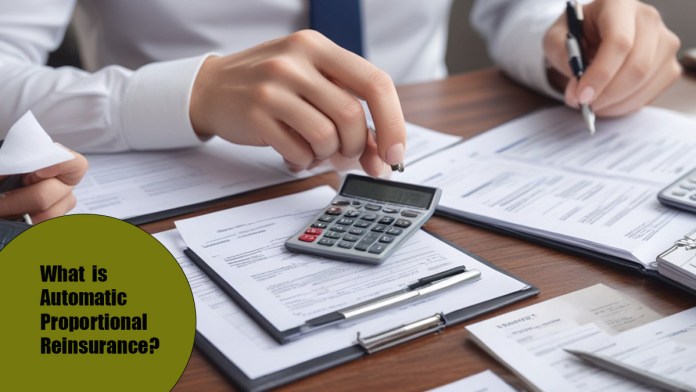Automatic proportional reinsurance is typically based on the agreement between the primary insurer and the reinsurer to split the premiums, expenses, and losses in accordance with a specific predetermined proportion.

This reinsurance serves as a backup risk management option for insurance companies that feel they have assumed too much risk and want to transfer a portion of it.
How Automatic Proportional Reinsurance Works
Typically, automatic proportional reinsurance involves a ceding company, where a fee is paid by the reinsurer for the ceding company to assume a portion of their risks and premiums.
The insurer’s policyholders usually pay a percentage of the premiums to the ceding company, and in exchange, the reinsurer assumes a fixed percentage of the insurer’s premiums, risks, and losses.
Types of Automatic Proportional Reinsurance
There are several types of automatic proportional reinsurance agreements, which include:
- Quota Share: This reinsurance is a type of proportional reinsurance whereby the reinsured assumes a fixed percent of all the insurer’s premiums, losses, and risk.
- Surplus Share: Surplus share reinsurance works in such a way that the reinsurers assume a fixed percentage of the reinsurer’s risks and premiums above a specific threshold. For instance, if the surplus threshold is $5 million and the reinsurer assumes a 50% surplus share, they would automatically assume 50% of the insurer’s premiums and losses above $5 million.
We strongly advise that, when choosing the type of this form of reinsurance, you should also consider the risks you intend to transfer, including the cost of the program.
Benefits
• Risk Management
It allows insurers to transfer a portion of their risk exposure to a reinsurer. By doing this, insurers get to maintain their financial stability and avoid insolvency when there’s a loss.
• Capital Management
It allows the management of capital for other uses. It forced insurers to manage their capital by reducing their required reserves and, at the same time, freeing up capital for other purposes.
• Enhanced Underwriting
It also provides access to additional underwriting expertise and resources, which allow the reinsurer to assess the risks and costs effectively.
Factors to Consider When Choosing Automatic Proportional Reinsurance
When it comes to choosing the right automatic proportional reinsurance, quite a number of people find it difficult, especially those new to the industry. That is why we have helped to curate some factors to consider when choosing this form of reinsurance. They are outlined below:
• The Type of Automatic Proportional Reinsurance
As stated in this article, there are two major types of automatic proportional reinsurance: quota and surplus share. Quanta shares are usually more expensive than super-plus shares simply because they involve sharing a stipulated percentage of each policy. So, when choosing any type, factor in the cost and the specific risks you wish to transfer.
• Premium and Commission
The premium and commission that the reinsurer charges are also one of the most important factors to consider when choosing this form of reinsurance. Ensure the premiums and commissions charged by the reinsurer are reasonable and competitive. In order to get the best option, compare the premiums and commissions charged by different reinsurers.
• Risk Appetite
This is also one of the factors that could influence your decision on the type of automatic proportional reinsurance to opt for. Basically, your risk appetite is a determining factor in the amount of risk you wish to transfer to the reinsurer.
Those with a high-risk appetite may opt for a higher percentage of automatic proportional reinsurance, while those with a low-risk appetite may choose a lower percentage of proportional reinsurance. The most important thing is to strike a balance between cost and risk transfer.
• Financial Strength of the Reinsurer
It often makes sense to assess the financial strength and capability of the reinsurer before choosing this form of reinsurance. Ensure that the reinsurer is financially capable of paying claims if there’s a catastrophic event.
• Claims Handling
It is important to check if the reinsurer has a good track record when it comes to the handling of claims. Endeavour to carefully check the reinsurer’s claims handling process and the amount of time taken to settle claims.
These are some of the factors you should consider before selecting automatic proportional reinsurance, as it would enable you to make informed choices.
In conclusion, automatic proportional reinsurance is a strategic approach and management tool that allows insurers to transfer part of their risk exposures to reinsurers. By doing this, it helps improve their financial strength and stability and, at the same time, reduces their volatility. While choosing it, ensure you consider both its benefits and drawbacks. This would help you weigh down your options and choose the one that aligns with your needs and preferences.



